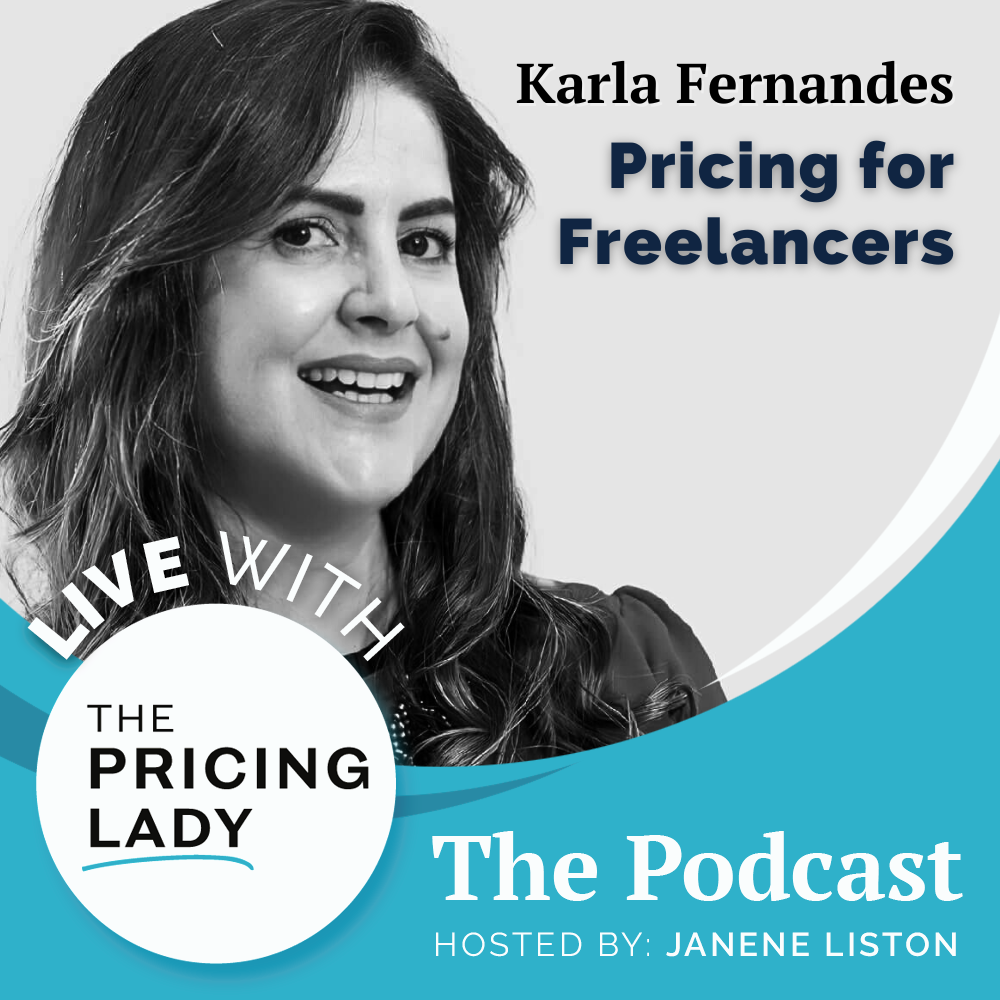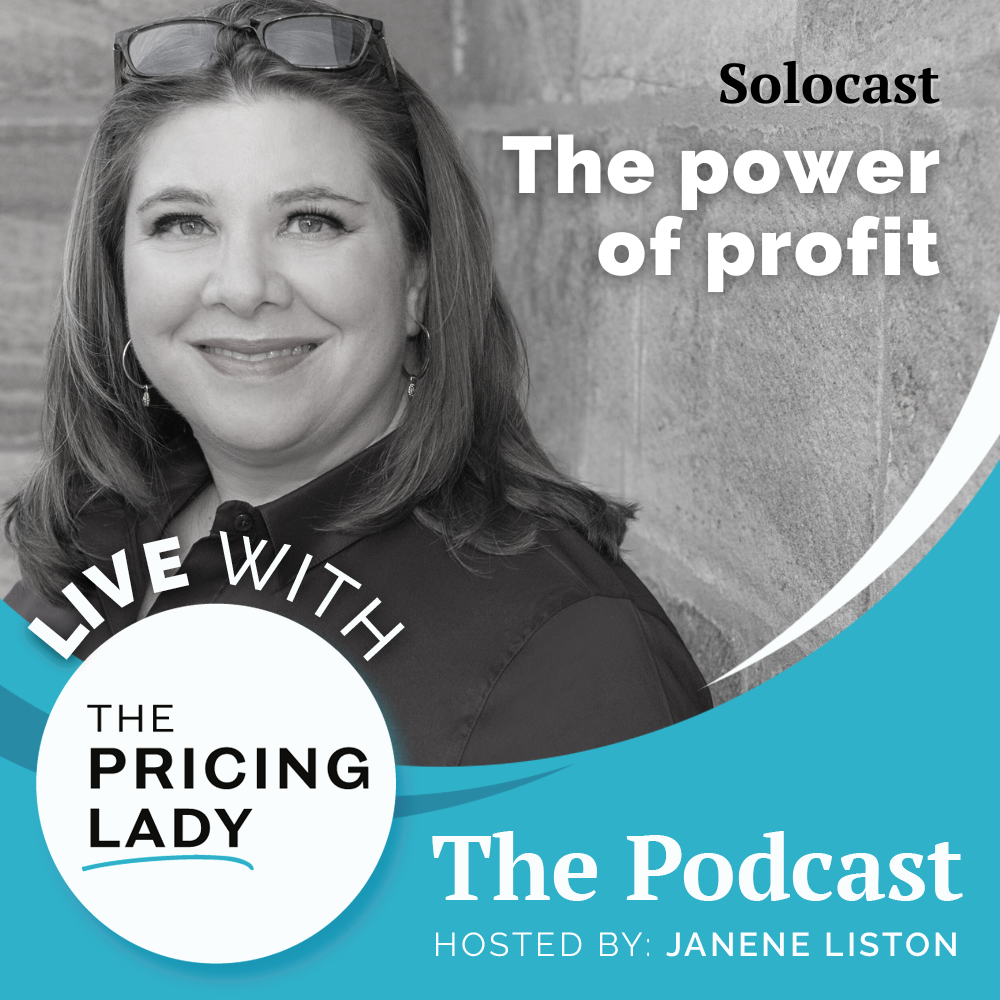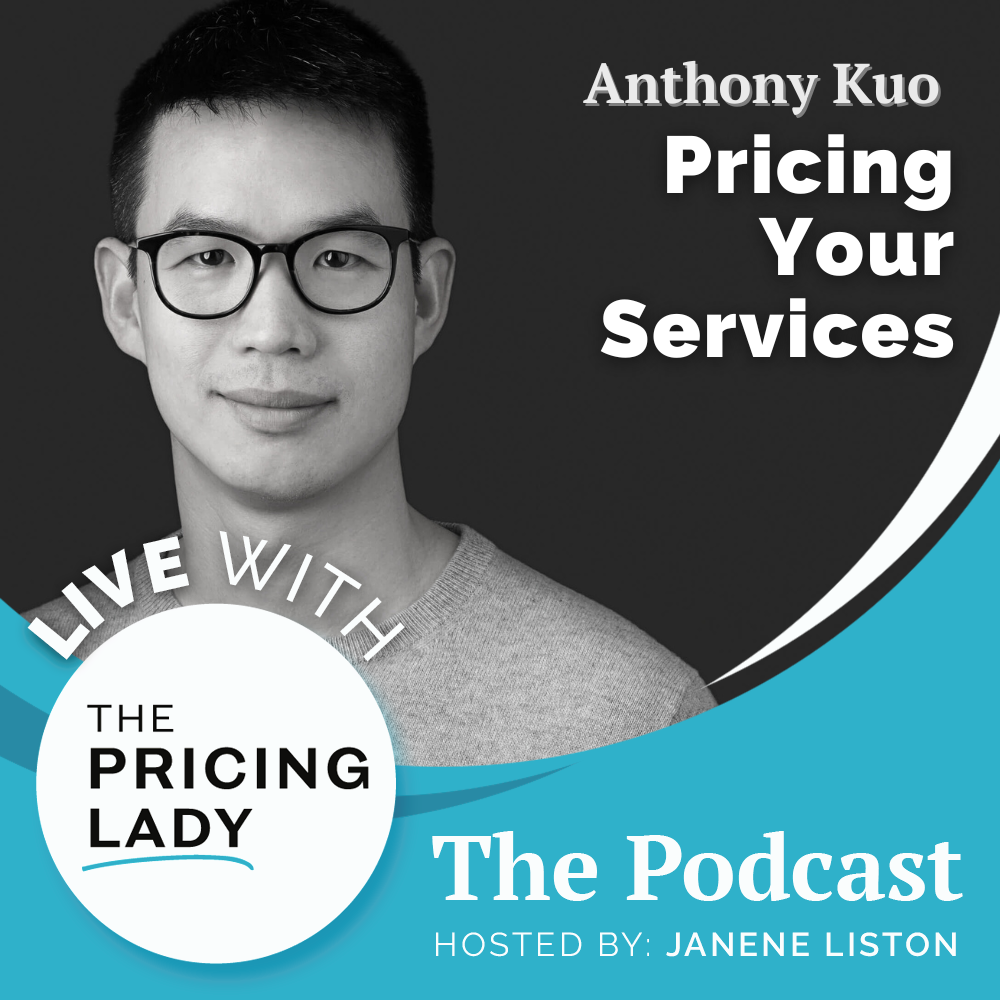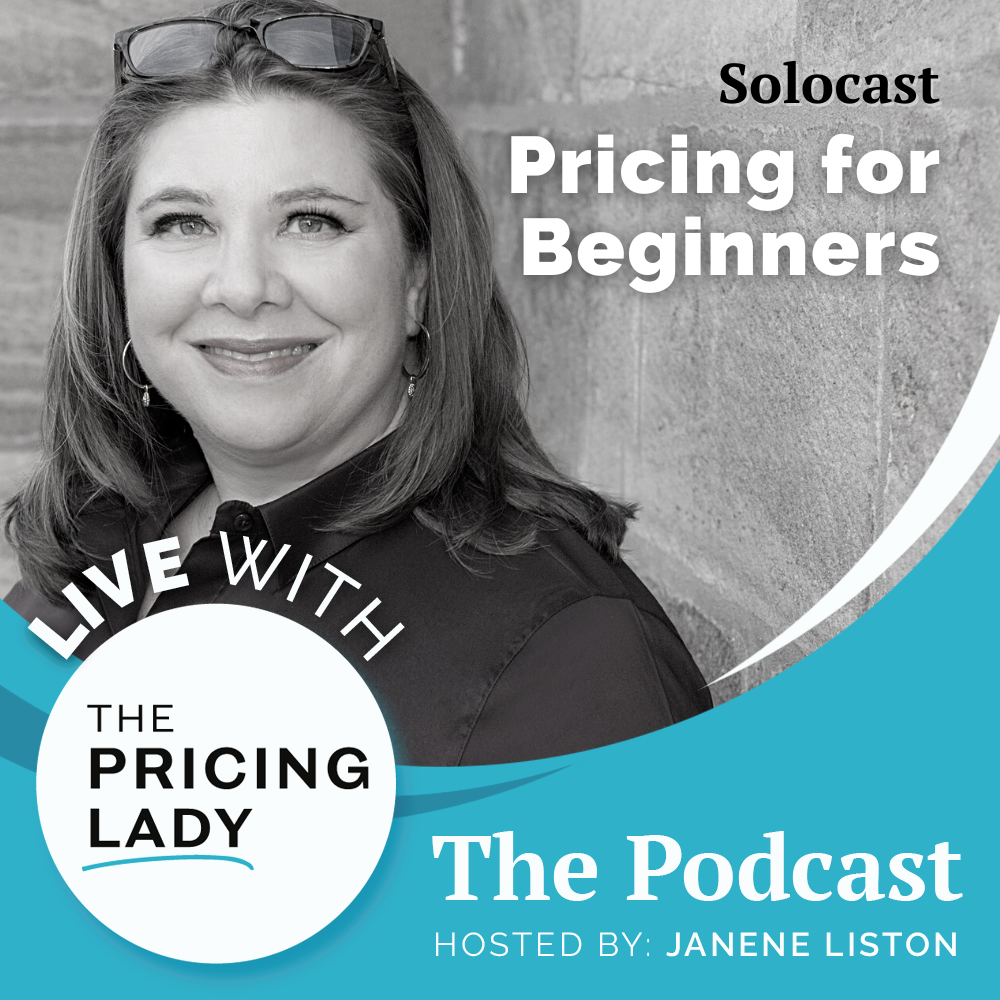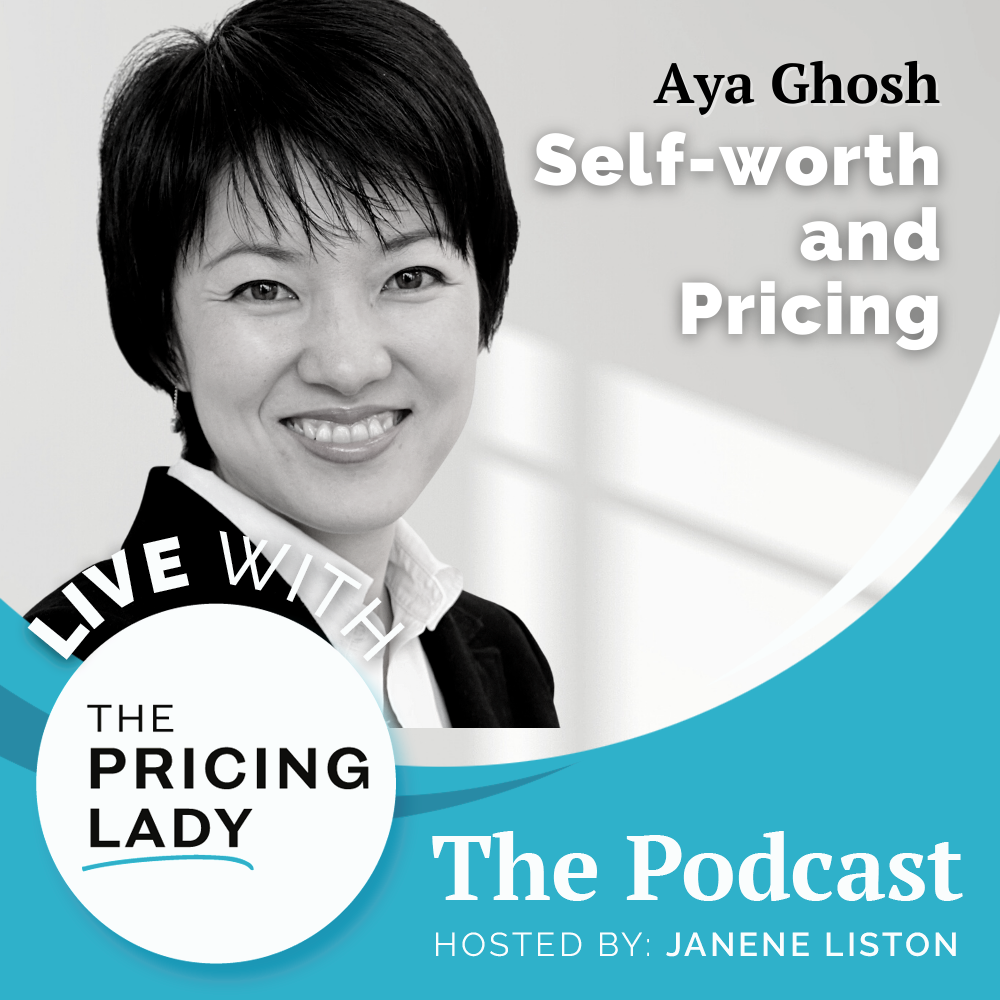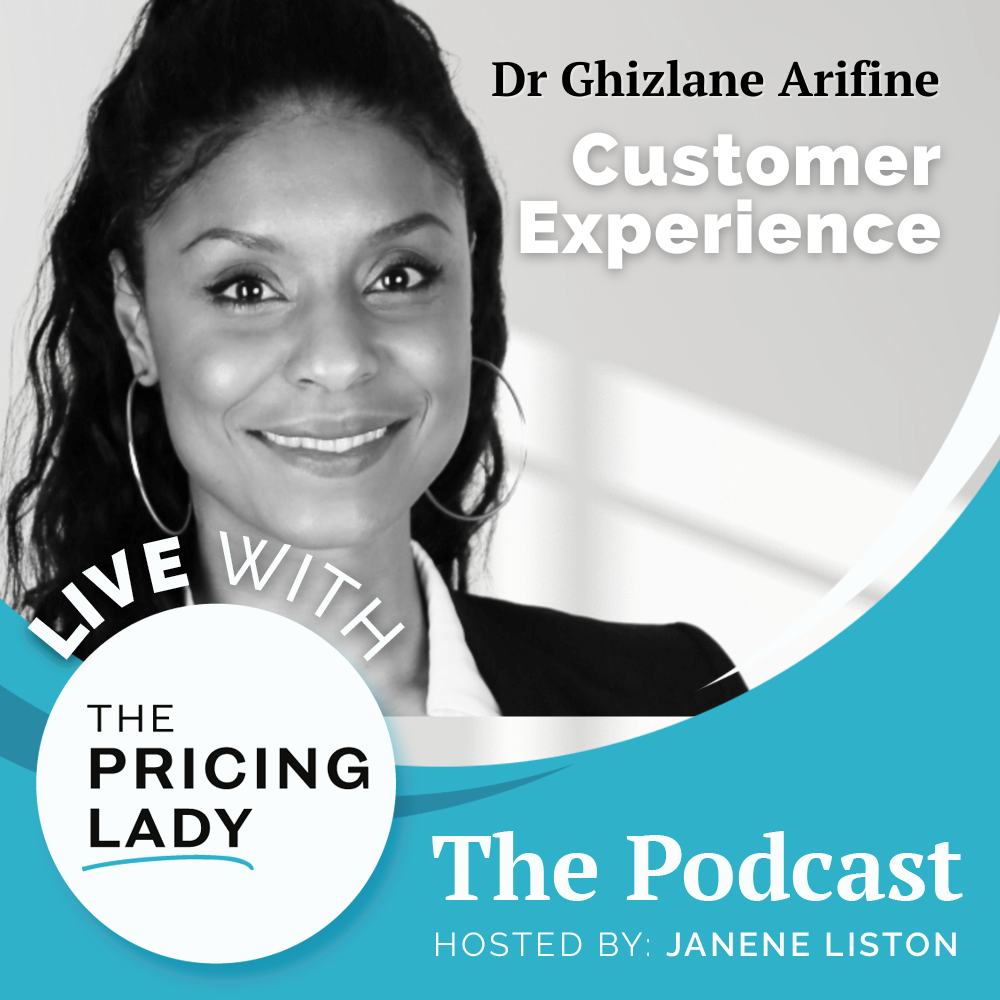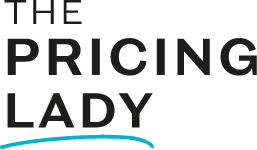What are the things that businesses do well to improve their pricing? That’s a great question. I often speak about the mistakes people make but this time I wanted to focus on what you can and should be doing with pricing to help you – i.e. pricing best practices. We are in unprecedented times, things are changing so fast around us we can see example after example of how those who are most adaptable are the ones who come out on top.
Looking at best practices in pricing for 2022 and beyond can help you make sure you’re focusing on the right things and taking the best actions at the right time. These are just a few of the pricing best practices that small businesses can use. They are also in my experience the most important.
In This Episode
In this Solocast episode we are taking a look at the 5 Pricing Best Practices for Your Small Business in 2022 and Beyond. Let’s make sure you’re getting it right sooner rather than later. Live with The Pricing Lady is a pricing podcast helping small businesses, startups and entrepreneurs like you get more sustainably profitable through better pricing practices.
Podcast Episode Highlights
- 0:00 Intro
- 2:12 Pricing Must be Aligned
- 4:38 Pricing Segmentation is Your Friend
- 7:42 Pricing Must be related to the Value you Deliver
- 10:01 Reality of Value Communication
- 11:22 Pricing Needs to be Fair
- 12:58 Your Prices Need to Change
- 15:30 Wrapping It Up
Favorite Quotes
“Create different offers at price and value points that are relevant to that segment.” Janene
“Sometimes it’s easy as you know, experts in our own field, we get lost in what we think the value is, but what we believe or how we measure the value may not always be the same as how the customer sees it or measures it. And you need to make sure, that you’re looking at it from their perspective. The best way to do that, of course, is always to talk to your customers to do interviews or surveys.” Janene
“Fairness implies that (your price), it’s equally valuable for both parties. And if your definition of a fair price is the cheapest price you can bear to give your customer, that’s not very fair to you. In reality, it may even not be very fair to them because if you have too low of a price, then your business isn’t going to be profitable enough for you to continue to be there in the future.” Janene
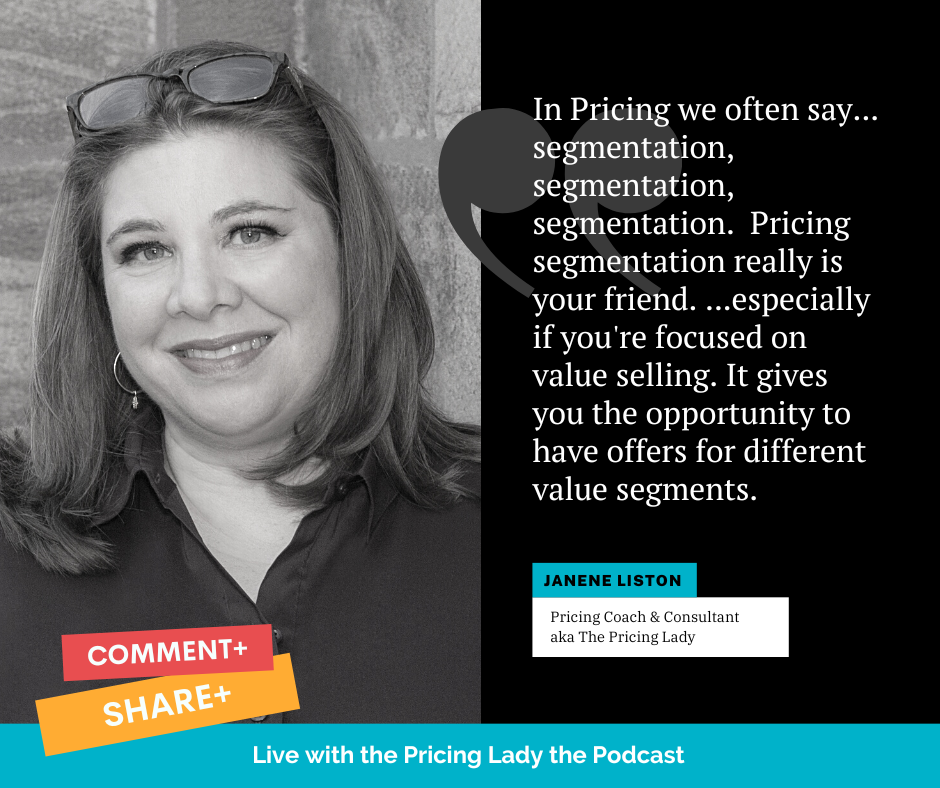
“If you are resistant (to making price changes). Or if you believe that you shouldn’t change your prices then you’re going to delay making changes that are necessary. Those delays can put you further behind in terms of not earning enough profit to keep things going in your business.” Janene
Rate, Review and Follow the Show on Apple Podcasts
“I’ve just found my Pricing Resource!” … “A binge worthy podcast.” … “I learned so much about how to improve my profitability.”
If that sounds like you, if you’re enjoying this pricing podcast, please consider rating and reviewing the show. It helps me spread the word to more people and ultimately get more small businesses on the path to sustainable profitability and business success. Click right here, scroll to the bottom, tap to rate with five stars, then select “Write a Review.” Last let me know what you loved most about the episode!
One more thing. If you don’t already, follow the podcast. New episodes come out every couple of weeks, plus bonus episode. If you’re not following there’s a good chance you’ll miss something.
Reach Out Connect and Book a Call with Janene
Linkedin | YouTube | Facebook | Email List
Get started improving your business. Sometimes it’s difficult to know where to begin. I suggest you Download the the self assessment Pricing Scorecard. Get a view of what’s working and what’s not working when it comes to pricing in your business. Figure out where to start making improvements.
Get in touch with Janene. If you’ve got a question that needs answering, a challenge you’re facing or you have suggestions for future topics or guests, let me know. Contact Janene.
Listen up! Don’t miss out. There’s a lot going on and you’ll want to be in the know. Follow my YouTube channel (rate it too please) so you don’t miss an episode of Live with the Pricing Lady or join my Email List.
Transform your business and life. My business is about helping you build a better business. One that’s profitable and where you can confidently charge for the value you deliver. Let’s see how we can work together. Book a complimentary Discovery Call today!
Episode Transcript
Janene: Hello, everyone. And Welcome to Live with The Pricing Lady The Podcast. I’m Janene your hostess. I welcome you to this episode. We will be taking a look at five pricing best practices for your small business in 2022 and beyond. This is a solocast episode. This show is all about helping you build a more sustainably profitable business through better pricing practices.
As I said, we’re going to be taking a look at best practices in pricing. There are many of them out there, but I’ve selected five that I think are the most important for most of you right now, one being small businesses and two in the times that we are in currently. So let’s just dig right in and get started.
Best Practice: Pricing Must Be Aligned
The first pricing best practice I have is that your pricing needs to be aligned. Now, this is something that most people wouldn’t think too much about in say a first step. When you take a step back, look at it, and you really think about it, it makes total sense. Your brand and your pricing has to be aligned. You have values in your business and your pricing needs to be aligned. The actions you take in your business needs to be aligned with your pricing and your message needs to be aligned with your pricing.
You can see that there’s all these aspects within your business to which pricing must be aligned. What we’re talking about here is congruency or you can even call it authenticity when these things aren’t aligned, what happens is customers, they may not be able to pinpoint it right off that, this isn’t right, but they’ll get the sense that something is not quite on the up and up and it’ll affect their buying decision. It may affect in the context of a pause. Or they’re questioning if the value is really there. But they can’t really express as to why they feel that way.
Importance of Your Own Behavior with Your Prices
You want to make sure that these things are aligned so that you don’t give them that opportunity to question the value, your offer, or the price. Making sure that your prices align in all these different contexts is extremely important. One thing I always talk about with people is how important your own behavior is with your prices.
Whether or not you just give discounts how and when you grant them the way in which you do or how you communicate your prices or how you communicate when you get push back on your prices. All of these things are an aspect of how people are assessing the value that you can bring and the authenticity that you have as a potential partner with them, whether they order your product or your software, your service. But they’re looking to see is this somebody or this, a business that it’s worthwhile for me to be involved and engaged with. Alignment is the first best practice.
Pricing Best Practice: Segmentation is Your Friend
Now another pricing best practice that maybe we haven’t thought too much about is pricing segmentation. One thing we like to say in the pricing world, is segmentation, segmentation, segmentation. Pricing segmentation it really is your friend. It is so much your friend, especially if you’re focused on value selling. Gives you the opportunity to have offers for different value segments.
Let me first be clear about something. Sometimes people think that automatically a marketing segment is the same thing as a pricing segment. That’s not necessarily true. You can have different segments for pricing than you have for marketing. Sometimes they’re the same, but you shouldn’t assume that they’re always the same.
A pricing segment is based on purchasing behavior. Do they behave in similar ways? Or how does this group behave when it comes to making a purchase versus another group? Or how do they value what your offer is versus another group? That’s another, say criteria when you’re setting pricing segmentation. And as I said, it’s your friend, because it enables you to be able to offer potential customers, different offers at different value points for different prices.
Serving Clients with the Same Offer
One of the questions that I get all the time from people on podcast interviews and potential clients’ letters, how can I serve both clients who are at the high end and the low end with the same offer. And really the answer is that in a sense, you don’t, you create two different offers or two different products or a product only in a product plus the service, right?
You create different offers at price and value points that are relevant to that segment. And that will really help you because let’s face it. Some people, even in, within a segment within a same segment, they may be looking for something that’s very low value and another group may be looking for something that’s high value within the same segment.
So you may even have sub segments occasionally, but I wanna get too complicated here. I just want to help you to understand that when you segment properly, you can create offers that are going to better meet the needs of each of those segments. Therefore, you’ll be able to have different price points and capture better value.
And when we say by we, I mean pricing, especially when we say capture better value, we say people remain get more money from the people who are willing to pay for more value. And for the people who aren’t, then you have a price that suits them. You still get the volume on that side. Segmentation, if you remember anything, segmentation is your friend when it comes to pricing.
Pricing Best Practice: Prices Must be Related to the Value you Deliver
Okay, let’s take a look at the third pricing best practice. Pricing must be related to the value you deliver. Regardless of which pricing method you use, cost plus or versus the competition or value based model or hybrid. At some level, it’s always going to come back to value. Even if you’re running an economy strategy.
And you’re trying to be the low price leader. The value in this case is being able to offer the lowest price. Your pricing always always needs to be related to the value that your customers are seeking. Now, if your customers are seeking an exceptional experience, that’s beyond anything they’ve ever seen, then that is going to be a very different price point.
Then if your customer is looking for the cheapest solution on the marketplace, that’s why it always comes down and comes back to the value and it has to be the value from the customer’s perspective. That’s also really critical. Sometimes it’s easy as you know, experts in our own field, we get lost in what we think the value is, but what we believe or how we measure the value may not always be the same as how the customer sees it or measures it.
Do Customers Interviews
And you need to make sure, that you’re looking at it from their perspective. The best way to do that, of course, is always to talk to your customers to do interviews or surveys. As a side note here, I have a challenge that I do a few times a year, which I’m also making into a self paced course.
But it’s all about how to do customer interviews. Keep an eye out for that (check out my Customer Value Challenge). If that’s something that you haven’t done yet, you may want to look into it because that is how you get the best information about who your people are and what they truly value in a solution. Pricing must be related to the value that your offer delivers.
Let me make one other point on that before I move on and that is that we have to be very clear that value and features and benefits are two different things. So, features and benefits are fairly easy and what most people, kind of extract and use when they talk about value communication.
Reality of Value Communication
But the reality is the value communication is actually one step further than the benefit or the feature. It’s actually what does the customer get out of it. The benefit of working with let’s say a public speaking coach is that you can speak more confidently, but the value of that is that it’s gonna help you get that promotion at work.
That promotion at work is, if you get a 15% promotion or a salary jump out of that promotion, that 15% that’s the value. Right. The value is the time you save by working with a coach, as opposed trying to do that, work yourself, same thing with a product. If your product has a best button on it, that has a special functionality.
That functionality and benefit is great, if it has an added value for the customer, does it save them time? Does it help them earn more money? Does it help them reduce risks? You know, that is where the value is found. So remember the functions, the features, the benefits of your offer, product service software, or otherwise are not the value. It’s what people get out of those things, that’s the value. It’s a really important distinction.
Best Practice: Prices Need to be Fair
Pricing best practice number four is that your pricing needs to be fair. Now this is a best practice that is near and dear to my heart, because it’s funny. I hear people say this all the time, they’re like, I really just wanna have a fair price, but oftentimes what people mean when they say they want a fair price, is they mean that they want to have a relatively cheap price for their customer and in my book, that’s not usually a fair price. Now, why might I say that?
Fairness implies that (your price), it’s equally valuable for both parties. And if your definition of a fair price is the cheapest price you can bear to give your customer, that’s not very fair to you.
In reality, it may even not be very fair to them because if you have too low of a price, then your business isn’t going to be profitable enough for you to continue to be there in the future. And if they really love what you offer, they won’t be able to come back to you; you won’t be there because you’re have gone out of business. A fair price is one that is fair to both your business and your customer.
It needs to be a reflection as you know what I’m gonna say… yes… yes… it needs to be reflecting the value that you deliver, but it has to be fair to both of you. It has to make sense and be profitable for your business as well as be good value for.
Pricing Best Practice: Your Prices Need to Change
Let’s look at the last number five best pricing practice, and that is that your prices need to change. They’re only thinking what Janene, that’s not really a practice. Well, actually it is because one of the biggest things that small businesses forget, or don’t know, sometimes it’s one, sometimes the other and maybe a little bit makes the both is, or don’t accept even.
This is another version of that is that their prices need to change sometimes. In fact, most businesses they need to change regularly. Now, depending on your industry regularly can be daily or hourly, or it can be, yearly or every two years generally, I wouldn’t go beyond every two years, but your prices need to change.
If you don’t accept that as a fact of doing business, then you are going to do everything you can to resist making those changes. And it’s going to hurt your business in the medium and short and long term. You may feel like it’s not hurting your business in the short term, but oftentimes it will. And here’s why, because you assume that if you raise your prices, fewer people will buy. Well in some circumstances like ones we’re seeing in the past year and maybe into the next year as well, is that there are, in many cases there are fewer people spending money on certain things.
And if there’s fewer people, then it stands to reason that you’ll have fewer customers buying things. The market is already shrinking. And that’s outside of your control to some extent. If you change your price or if you hold your price, then that same price as you had before times a fewer number customers is a lower profit.
What Do Your Customers Value
In the end, right. But if you know that you’re gonna have a few less customers and you raise those prices a little bit, you may be able to, make a bit more money, even with fewer customers. Of course, you have to run numbers to understand that. But of course, if you you’re in a position where you are resisting the need to change prices, Then you may wait too long to make that change and kind of miss the boat on that.
Remember there are lots of ways to raise prices without, just adding 10% to your price. I encourage you in this context. Be creative in what you do. Talk to your customers, understand what they need once again, understand what they value because in this time of great change what customers value is completely different in many ways than it was say two or three years ago. If you haven’t adjusted your offer to that, then you are in a difficult situation. It may be not only that your prices need to change at times, but your offer needs to be adapted to those changes as well.
And that can also make it easier than to implement price changes. But again, if you are resistant (to making price changes). Or if you believe that you shouldn’t change your prices then you’re going to delay making changes that are necessary. Those delays can put you further behind in terms of not earning enough profit to keep things going and keep things moving in your business of course, that’s not what we want for.
Wrapping It Up
That, ladies and gentlemen, is what I wanted to share with you today on this pricing podcast. Those were 5 Pricing Best Practices that you can start using or using more effectively in your business. If you’ve enjoyed this, please be sure to leave me your comments or head on over to Apple Podcasts and leave a review.

